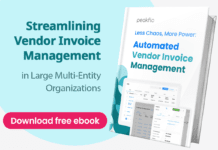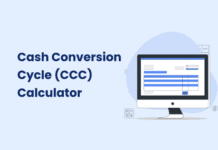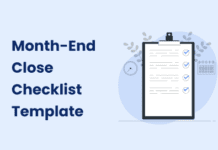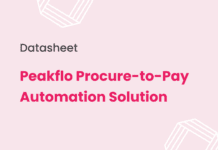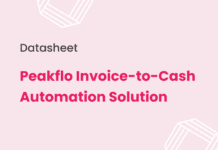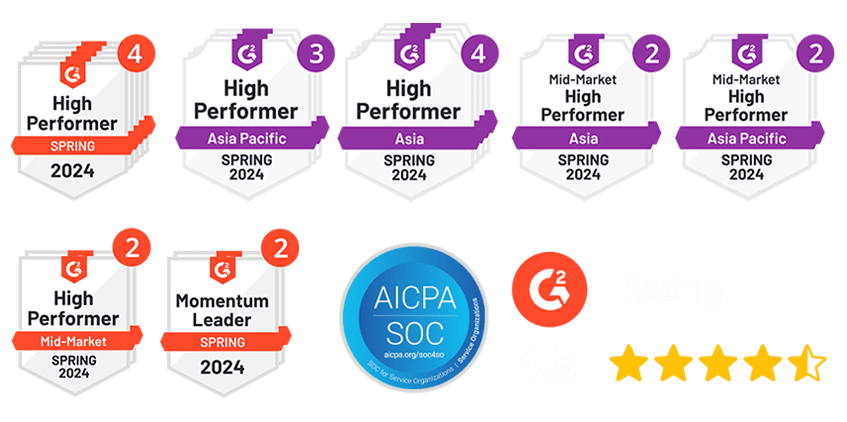Managing money can be challenging for companies, especially during economic uncertainty. To optimize your budget, you should focus on identifying errors, cutting unnecessary expenses, finding savings, and creating value. Finance leaders, such as CFOs, need a clear understanding of departmental spending. Budget reports are essential for putting these principles into practice effectively.
Budget reports can help companies to improve financial management and reach business goals. With clear budget reports, companies can track and analyze their financial performance, identify milestones, control spending, and decide on future investments.
Whether you’re managing a business or a project, having a budget report is a vital tool for managing your finances and ensuring the success of your business or project. To avoid financial troubles, it’s important to understand what a budget report is, its purpose, and its components.
In this blog, dive into budget reports, how to create one and how you can improve your budgeting strategies.
What are Budget Reports?
A budgeting report, or budget report, shows the total expenses the company has spent in a particular period. It compares the expenses of the company against the budget set, which can be quarterly or annually.
The details of budget reports show the total units in terms of labor, materials, and other costs required for sales and goods or service productions.
Through budget reports, businesses can gain insights into their profit and loss. This is because budget reports take into account spending behavior and estimate the company’s income through sales or other revenue-generating activities.
Company leaders use budget reports to strategize ways to increase sales volume in the coming year while considering the current market conditions and trends.
Budgeting vs Forecasting
At a glance, budgeting and forecasting may share similar concepts as both involve future financial projections over a fixed period, usually quarterly or yearly. However, they’re different in terms of their purposes.
Budgeting is simply planning how and where to allocate resources according to the business goals. Budgeting reports serve as a guide for internal departments on how much they can spend for a given period.
On the other hand, forecasting is predicting the revenue that the business will achieve in a specific period. Some types of companies might focus on long-term forecasts, such as startups, that serve as a roadmap to achieve financial growth for the next 3 years.
In planning, budget reports and forecasts come hand in hand. Let’s say, if you forecast that a certain business unit will contribute a significant amount to the monthly recurring revenue (MRR), the budget for the same project may also increase.
Note that forecasts, although reliable, change quite drastically. This is where budget control plays a key role.
Budget Reports vs Financial Reports
Budget and financial reports are two different sets of data, and both help professionals make accurate predictions about the business’s financial performance for the period ahead.
Here are the financial metrics to compare when looking into budget and finance reports:
- Predictions vs results. Budgets predict how much the company will spend to achieve its quarter or annual objectives, whereas financial reports provide the actual results.
- General vs specific. Budget reports only show the company’s projected spending over a specific period. They also include different budget plans from individual departments, from marketing to sales. Financial reports show the general output of the company’s financial performance.
- Limited vs detailed. Budgets typically present limited data, such as the company’s outgoing and incoming cash flows. Financial reports, on the other hand, are more detailed as they map out the company’s current assets and liabilities.
- Company-level vs. department-level. The finance and accounting department uses the budget reports to guide other departments on how they can manage their budget responsibly. On the other hand, finance reports help the finance team understand the company’s worth to map out new business goals.
What is the Importance of Budget Reports?
The primary purpose of a budget report is to compile spending data for a business or project over a specific period. This information is crucial for managing finances effectively and ensuring the success of the company or project. Without proper spending control, a business can struggle, especially during economic ups and downs. Regular budget reports help navigate through industry challenges. Another important purpose of budget reports is to establish clear spending expectations for teams. When team members understand the budget and how their spending impacts it, they are more likely to spend wisely, leading to more effective financial management.
Let’s take a look at what is the purpose of budget reports in business:
- Monitor expense performance against budget expectations and take corrective actions.
- Set more profitable and effective goals by analyzing expenses and identifying unnecessary investments.
- Improve team leadership and productivity by enhancing understanding of projected expenses.
- Allocate funds wisely by detecting budget misuse and facilitating communication among team members.
- Plan for the future by aligning goals with business plans and growth strategies.
- Help set realistic goals by calculating projected income and expenses.
- Identify risks and opportunities to make informed decisions and stay competitive.
- Evaluate business strategies by using budget reports to measure project performance.
- Set clear expectations and parameters for teams to ensure spending aligns with the budget.
- Use historical data and research to improve accuracy in future budget estimates.
Budget Report Example
Typically, budget reports are identical to income statements. They have the same components, such as the costs of goods sold, revenue, sales, G&A as well as other expenses, and the net operating income.
Below is an example of a budget report template for a small company.
Components of a Budget Report
Before delving into how to prepare budget reports, there are some important elements to learn about:
- Estimated revenue. This section should outline the expected revenue for the fiscal year, broken down by sales forecasts and costs of goods sold or services rendered.
- Fixed costs. This refers to the money that your business should pay on a regular basis, also known as the G&A expenses. Some examples are payroll, mortgage, and utilities.
- Variable costs. Different from fixed costs, variable costs are expenses to manufacture more of the products or distribute more of the services that are increasing in demand.
- One-time spends. As the name says, this category of expense happens rarely. An example is an “urgent” purchase, such as the charges for fixing a broken device.
- Cash flow. This measures the anticipated inflows and outflows that the company usually derives from the year before to forecast the year ahead. It helps identify the high and low seasons in the business and when to increase or decrease purchases and investments.
- Net income. This is the total profit your company earns after subtracting estimated costs from revenue. It can identify whether the company is doing well or not. If you see a stable decline in your recurring net income, consider cutting expenses.
How to Create Budget Reports?
Here are the steps to create budget reports.
1. Assess Your Current Financial Status
Firstly, use your spend management tools or accounting software to determine the total amount spent up to the current date. This involves reviewing records and transactions to understand the precise expenditure against each budget line item. By adding this information to your budget report, you’ll gain a clear picture of the actual expenditure against the budgeted amounts for each category.
2. Compare Actual Spending with Budget
Next, compare the actual expenditure with the budgeted amounts for each category. Start by identifying the original budget figures for each line item. Then, analyze the actual spending to determine if you are within budget, over budget, or under budget for each category. This comparison is crucial for understanding your financial position and identifying areas that may require adjustment.
3. Calculate Variances
Using tools software like spreadsheet, calculate the difference between the amount spent and the budgeted amount for each category. A positive result indicates a surplus, meaning you have spent less than budgeted. On the other hand, a negative result indicates a deficit, suggesting you have overspent compared to the budgeted amount. These calculations provide insights into where adjustments may be needed.
4. Identify Reasons for Variances
To understand the reasons behind any variances, investigate why there are surpluses or deficits in each category. Look for errors in budgeting, instances of overspending or underspending, or other factors that may have contributed to the variances. This step often involves communication with team leads and stakeholders to gather information and insights.
5. Take Necessary Action
Based on your analysis, determine the appropriate actions to address the variances. This could include adjusting budgets, implementing spending controls, revising spending policies, requiring approval for significant expenses, or enhancing budget tracking processes. Collaborate closely with team leads and stakeholders to implement these changes effectively and improve overall budget management practices.
Best Practices for Creating Budget Reports
Creating effective budget reports is essential for financial planning and decision-making. Here are some best practices to follow when creating budget reports:
1. Benchmark Budgeting Needs
Of course, you’ll need to have a benchmark for setting a budget. In this case, the data from the period before will provide you sufficient estimates of how much you need to spend in the period after – perhaps with some adjustments that factor in economic circumstances or industry trends.
However, estimating the starting point might be challenging for new businesses. Research competitors or best industry practices to find a good reference point.
If unsure, ask a finance professional in your organization for suggestions. They can provide suggestions on how to allocate your budgets properly and how to take control when the spending exceeds the limit.
2. Align Budgets with Business Goals
The point of a budget is to have the monetary resources you need to reach your goals or KPIs.
However, business professionals tend to overestimate the budget they need to achieve their ambitions. This is why you need to always calculate how much you’re spending vs how much you’re earning, such as by referring to your income and cash flow projections, then try to find balance.
Make sure to also include other income streams aside from your total sales income, such as returns on investments (SOI), interest revenue, stock dividends, or asset sales.
3. Identify Expenses
Calculate the labor, materials, and any other resources or tools you’ll need to support your strategy. Then, categorize them into fixed, variable, and one-time expenses.
It’s important to be tactical when allocating your expenses as some projects vary in terms of budget, scope, and impact. To meet the preserved budget, you might need to trim the budget for initiatives that are lower on your priority list.
4. Use Budgeting Software
It’s easy to find free templates out there to base your budget. However, managing budget reports through spreadsheets is a bad idea.
Spreadsheets are prone to errors and without accurate data, it’ll be difficult to gain insights into the efficiency of your budget usage.
Budgeting is also not a one-man job and involves the participation of the entire team. Spreadsheets were not made to be a collaborative dashboard in mind, and it’s hard to keep everyone in a loop when there are any changes or issues.
Using budgeting software, such as Peakflo, will put budget management in easy mode for your entire team. Set up a budget in a couple of clicks, adjust the period and amount, then invite the team members.
Peakflo will constantly let you and the tagged members know before and when your budget breaches the limit, so you can take proactive actions. You can even put control measures in bill submissions and approval matrixes to make your budgeting efficient.
Budgeting doesn’t have to be stress-free with Peakflo. Try out our end-to-end payable automation and you’ll know why.
FAQ
What should be included in a budget report?
A budget report should include actual expenditures, budgeted amounts, variances, and explanations for significant differences. It should also provide context, historical data, and insights to aid in decision-making.
How often should budget reports be prepared?
Budget reports should be prepared on timely basis, typically monthly or quarterly, to ensure that financial information is up-to-date and accurate.
What is the format of a budget report?
The format of a budget report can vary but often includes tables, charts, and graphs to present the data in a clear and concise manner. It should be easy to read and understand for stakeholders.
Who prepares budget reports?
Budget reports are typically prepared by finance professionals or accountants who have access to the necessary financial data and tools. They collaborate with department heads and stakeholders to gather information and ensure accuracy in the report.









![Why AI Sales Calls Are Making Good Sales Reps Even Better [2025 Guide] ai sales calls](https://cdn-kmjmp.nitrocdn.com/YvtqmrsiHUxqerlSiZgbfzqqTARWTElr/assets/images/optimized/rev-834053b/blog.peakflo.co/wp-content/uploads/2025/09/65168cf6-3001-4733-8cbc-12d5684cf449-218x150.webp)







